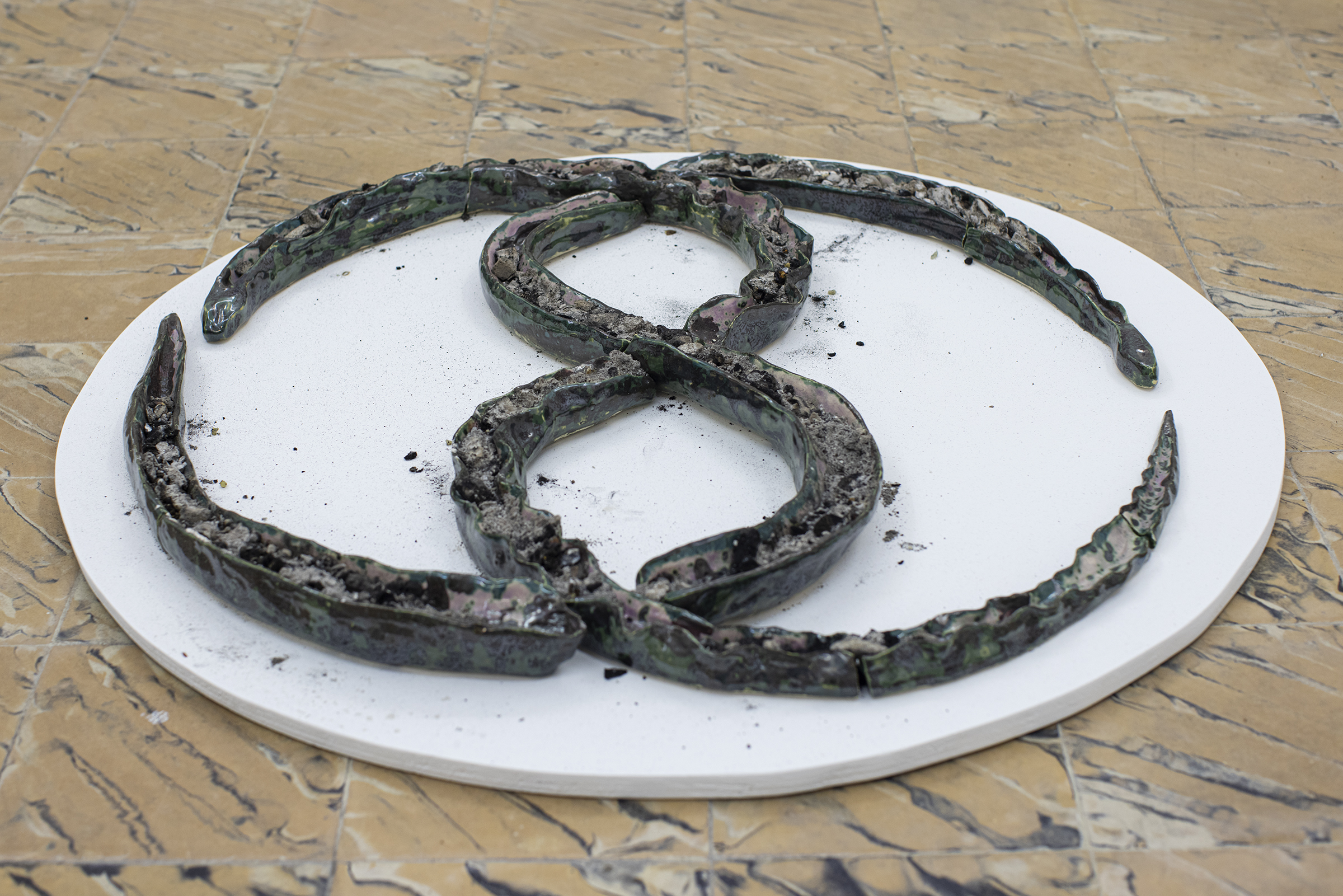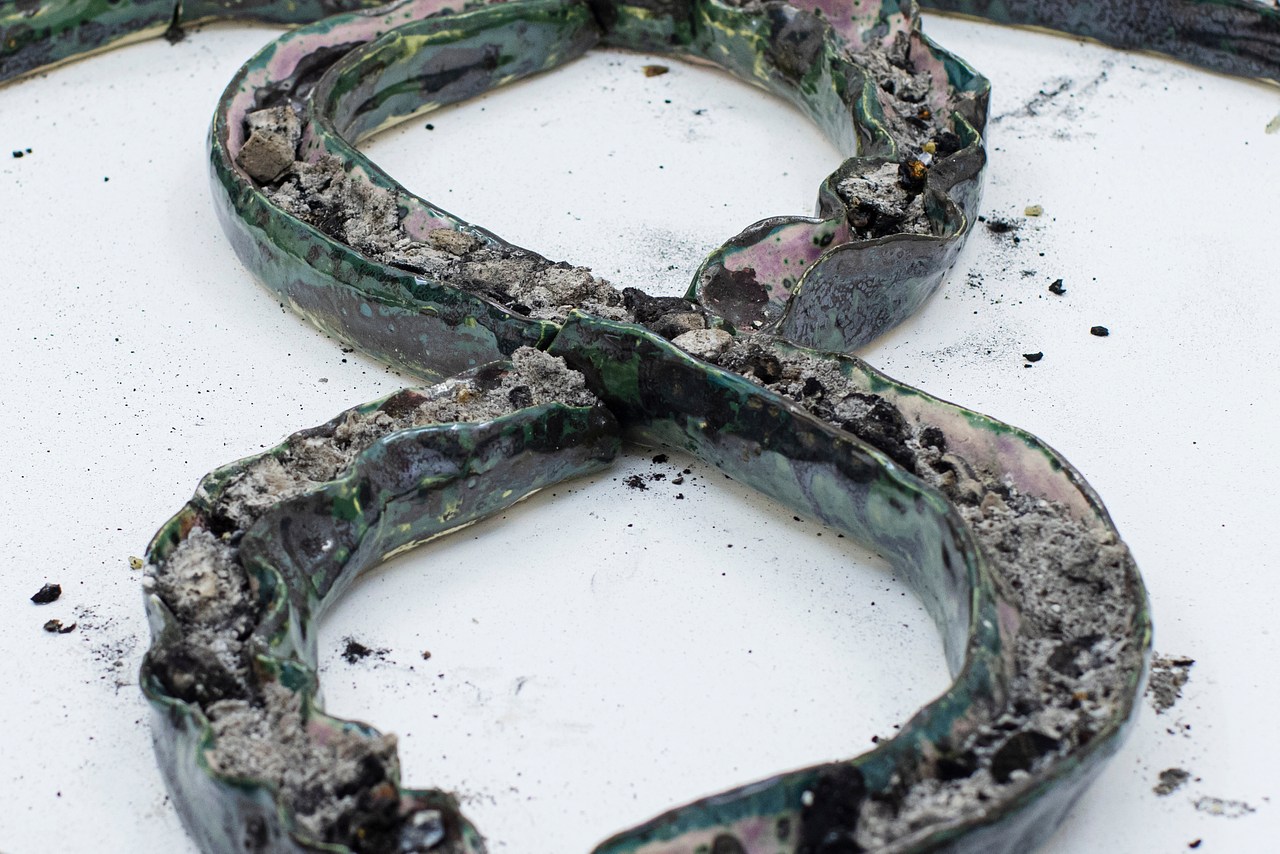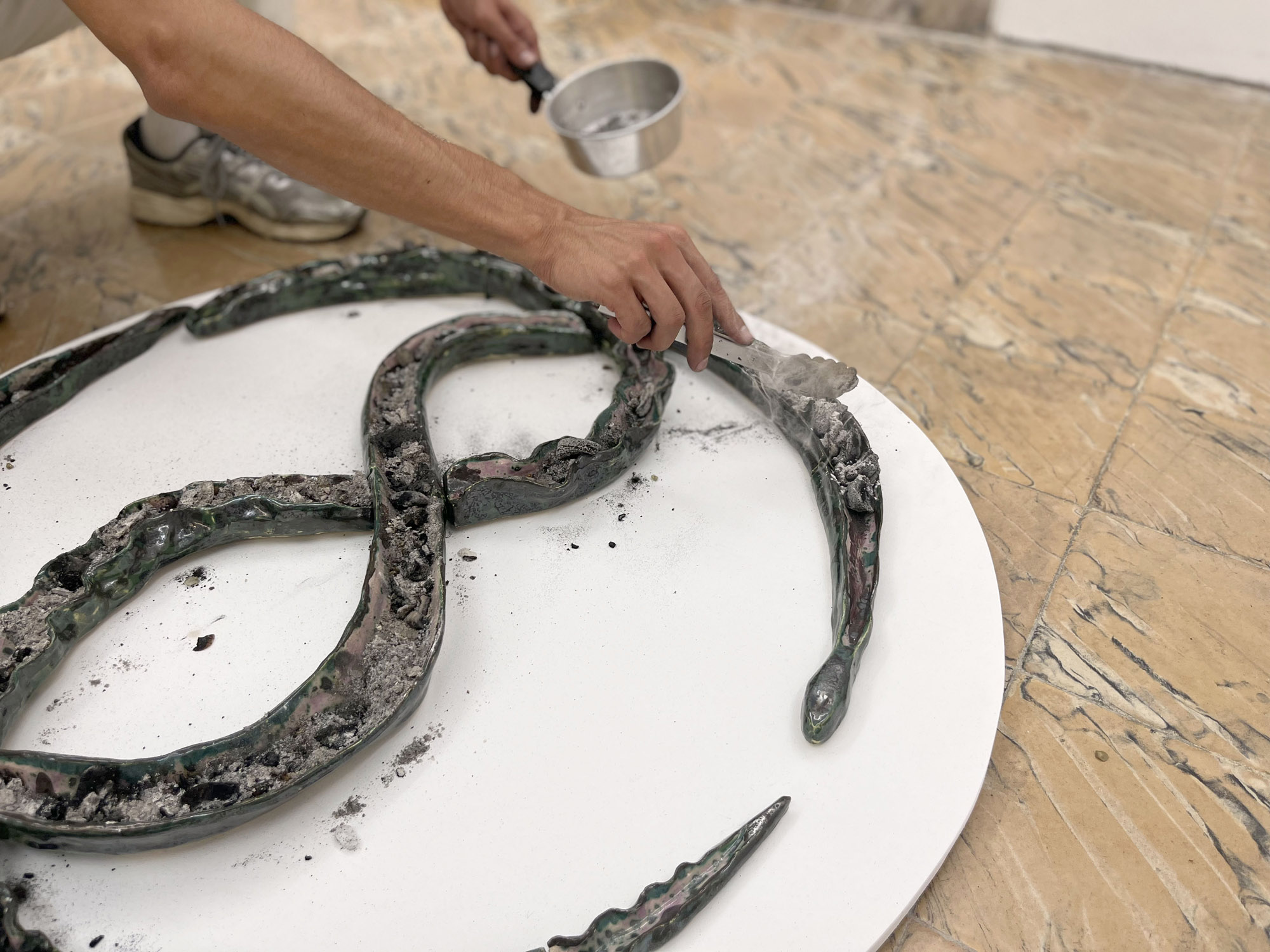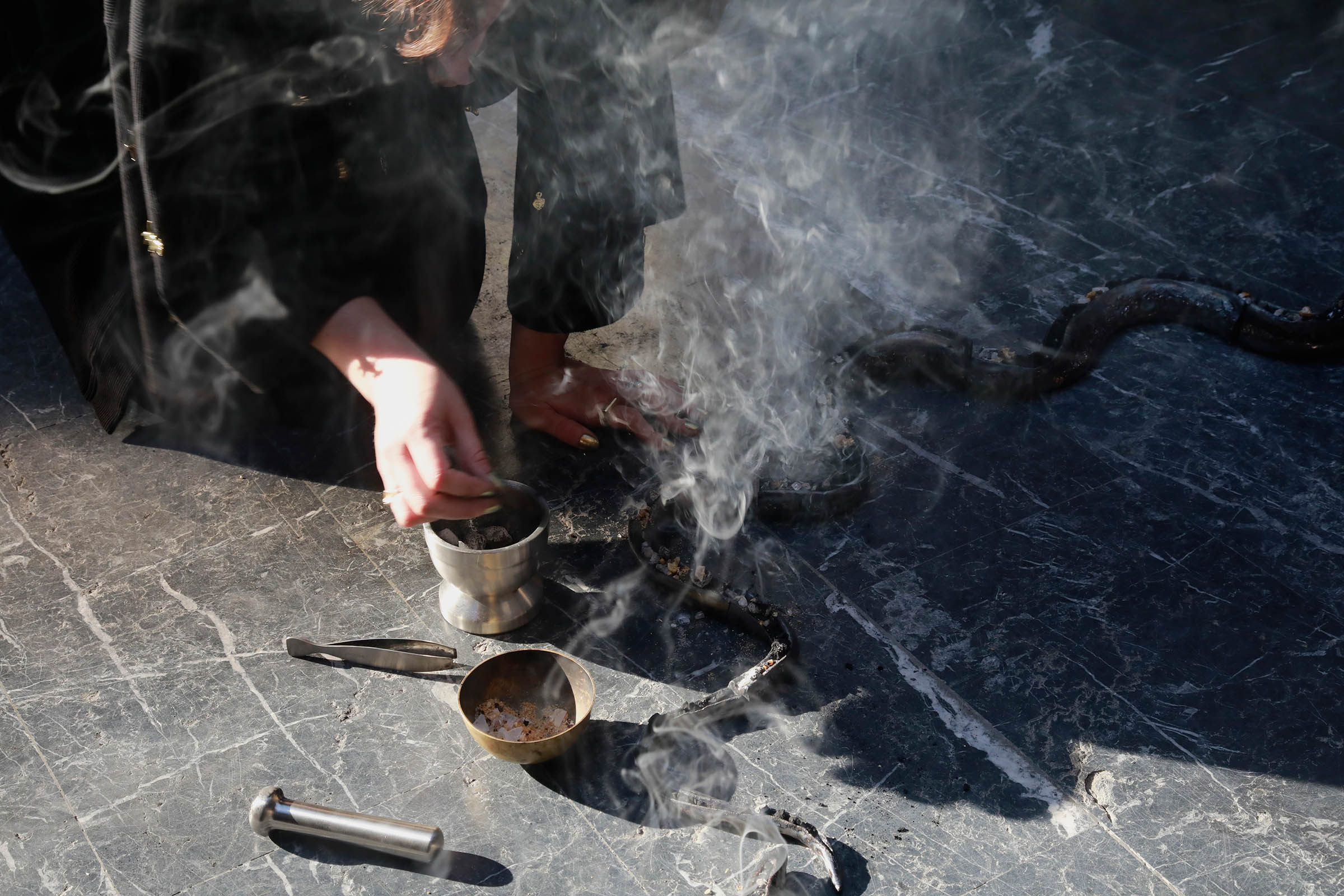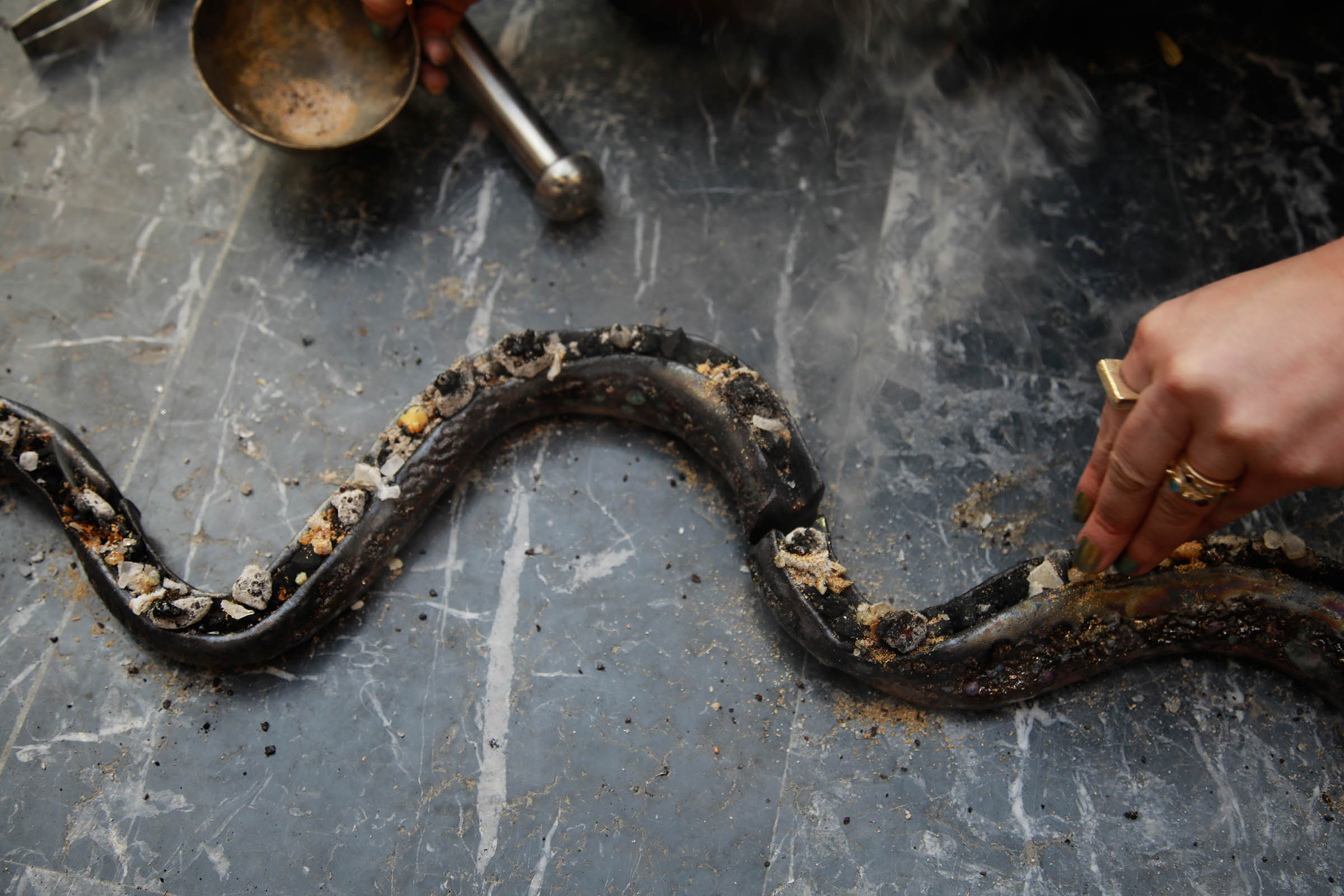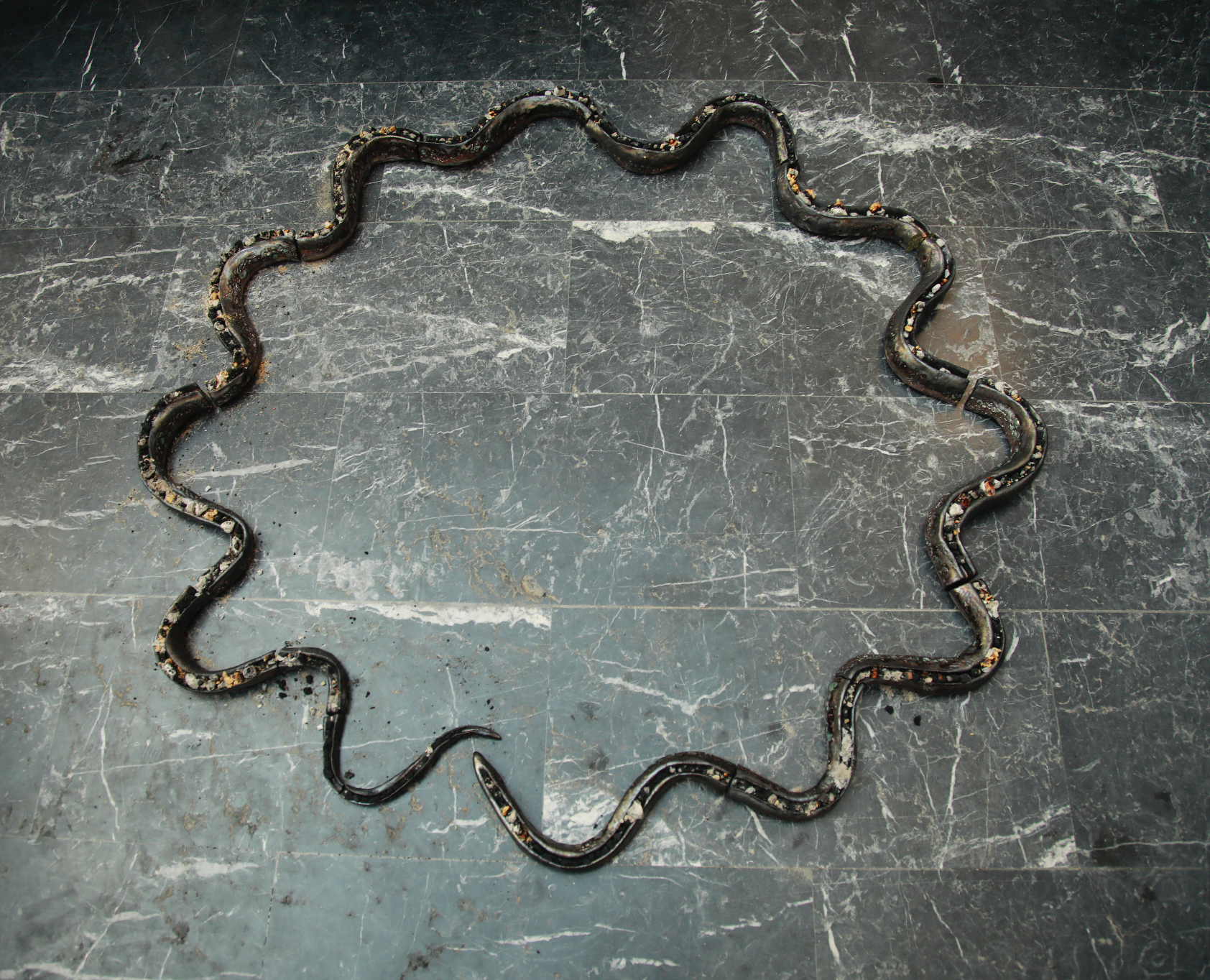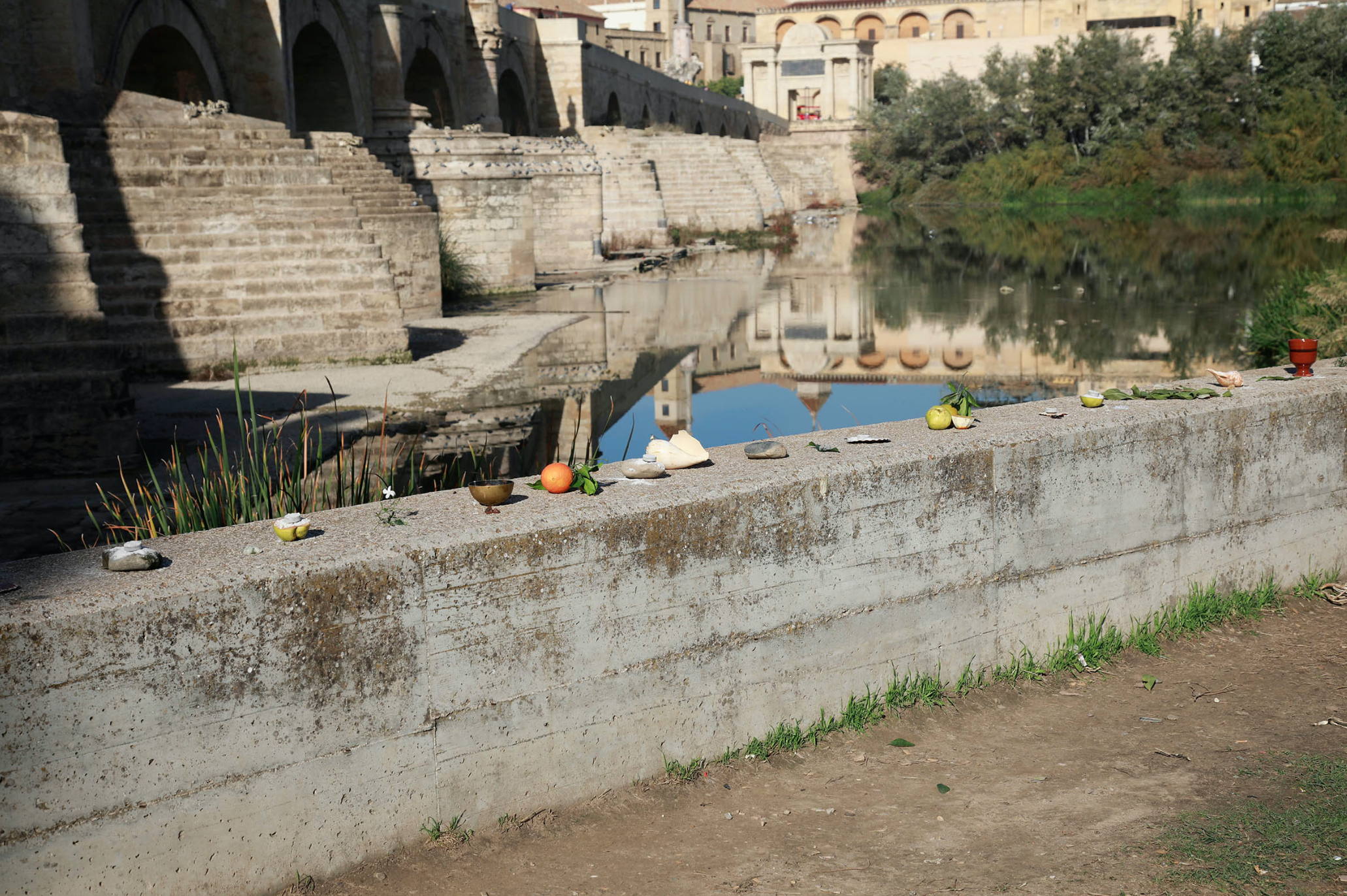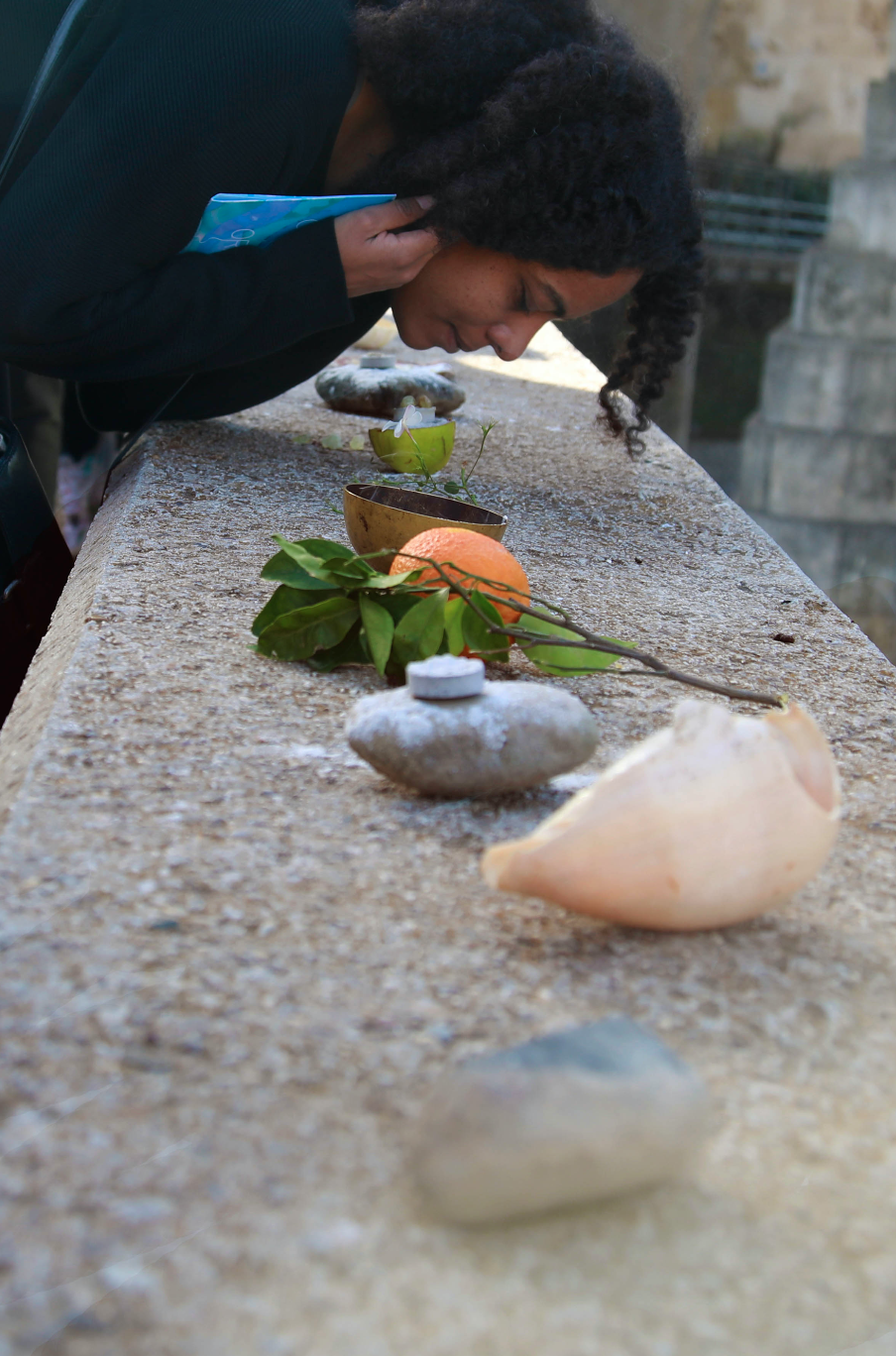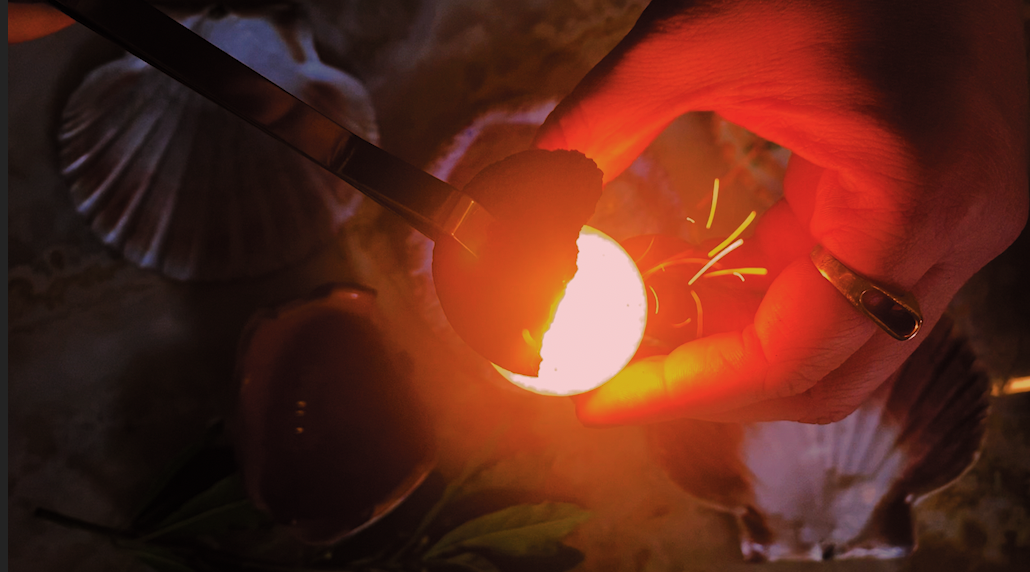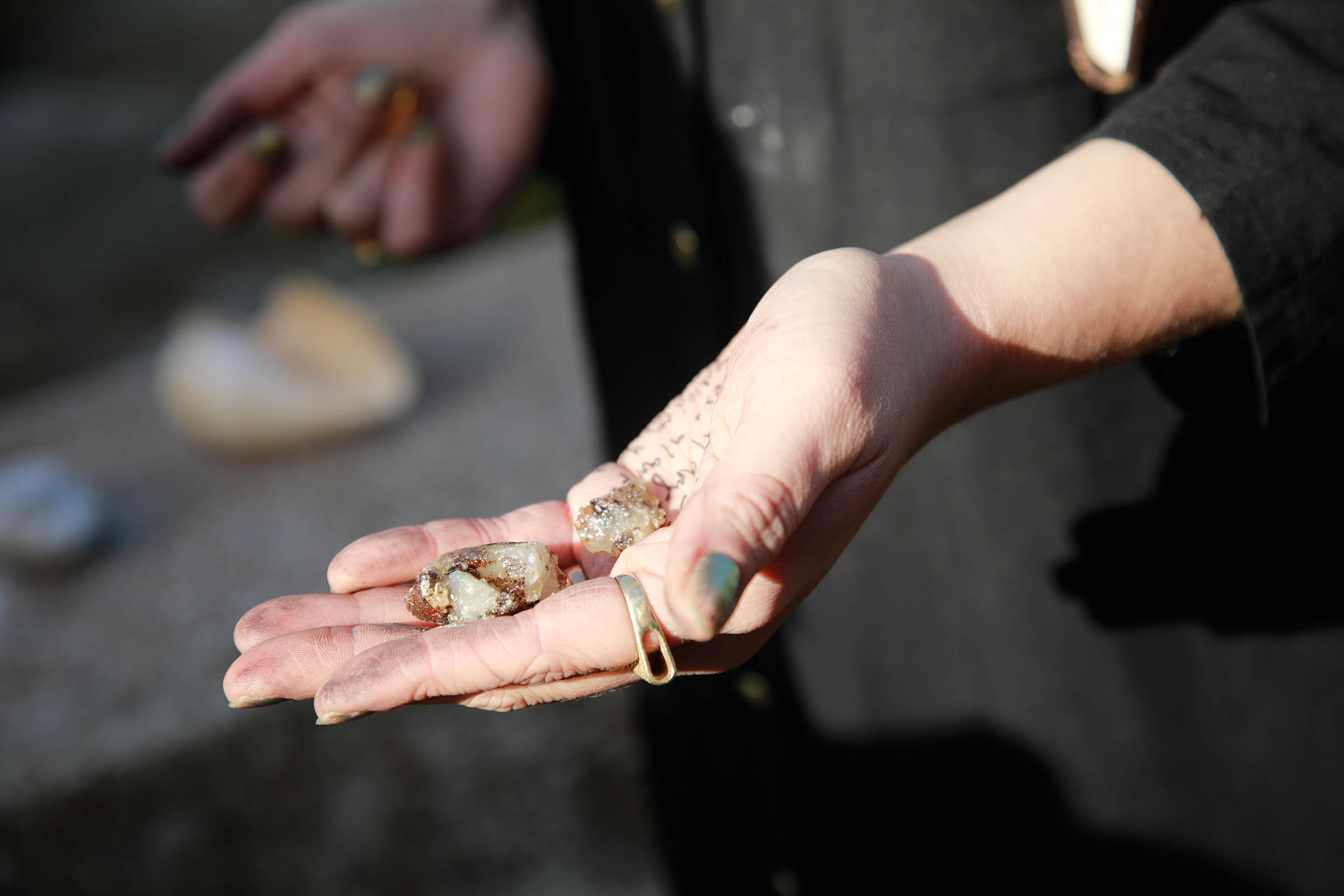About Smoke - Invisible things, Reenchantments of the body.
Our senses co-create our reality; there is a feedback loop between the senses that shapes and generates our external and internal worlds. Focusing on a sense, like a door or a window, allows us to transform, recalibrate our appreciation of the world and our reality. Understanding the hierarchy of the senses as an inherited, not fixed system, becomes then a decolonial tool.
Smell is a portal; it simultaneously allows us to travel within ourselves, our associations, stories, and personal experiences. At the same time, it is a journey outward, towards the material world that comes into direct contact with our inner body; in other words, the act of smelling is a physical act of consuming something and making it ours.
Smell can also be a time machine that grants us access to how ancestral worlds might have smelled. When we think about history, we often focus on facts, events, and things that happened, but this is an invitation to access the past through its sensory universe and our intangible heritage.
I like to imagine a deep relationship, a sacred geometry, between the sinuous body of the river, a vitalizing artery of the Earth, and our own circulatory system. Similarly, tree resin, as a vital liquid, heals and invigorates the vegetal body. This connection leads us to reflect on the origins of our relationship with these resins and aromatic woods. Incense is as ancient and transcultural as fire itself; our ancestors discovered around ancestral bonfires that certain trees emitted distinct fragrances when burned. In the ancient world, where accessing the inner body was a challenge, smoke acted as a healing vehicle, penetrating the body without the need for a blade. The act of burning aromatic materials is present in all cultures, serving as both ritual and medicine, uniting the realms of the mundane (visible) and the divine (invisible). The act of inhaling becomes a magical act intimately linked to life.
Standing before a river, we can visualize the flow of time itself. The river represents a sacred topography, quenching the thirst of the earth's body in the same way that our animal body is irrigated by blood. Likewise, resin or sap vitalizes vegetal bodies. When a tree suffers a wound, a liquid flows, covering it, and over time, it coagulates into a hard and shiny substance, similar to precious stones. The smoke that rises to the sky is also a connection with the invisible world, a bridge between the two realms, a mirror of our impermanence and transition.
Click here to enjoy Smoke Compositions, an ASMR video
meditation on the history and materials of incense
Our senses co-create our reality; there is a feedback loop between the senses that shapes and generates our external and internal worlds. Focusing on a sense, like a door or a window, allows us to transform, recalibrate our appreciation of the world and our reality. Understanding the hierarchy of the senses as an inherited, not fixed system, becomes then a decolonial tool.
Smell is a portal; it simultaneously allows us to travel within ourselves, our associations, stories, and personal experiences. At the same time, it is a journey outward, towards the material world that comes into direct contact with our inner body; in other words, the act of smelling is a physical act of consuming something and making it ours.
Smell can also be a time machine that grants us access to how ancestral worlds might have smelled. When we think about history, we often focus on facts, events, and things that happened, but this is an invitation to access the past through its sensory universe and our intangible heritage.
I like to imagine a deep relationship, a sacred geometry, between the sinuous body of the river, a vitalizing artery of the Earth, and our own circulatory system. Similarly, tree resin, as a vital liquid, heals and invigorates the vegetal body. This connection leads us to reflect on the origins of our relationship with these resins and aromatic woods. Incense is as ancient and transcultural as fire itself; our ancestors discovered around ancestral bonfires that certain trees emitted distinct fragrances when burned. In the ancient world, where accessing the inner body was a challenge, smoke acted as a healing vehicle, penetrating the body without the need for a blade. The act of burning aromatic materials is present in all cultures, serving as both ritual and medicine, uniting the realms of the mundane (visible) and the divine (invisible). The act of inhaling becomes a magical act intimately linked to life.
Standing before a river, we can visualize the flow of time itself. The river represents a sacred topography, quenching the thirst of the earth's body in the same way that our animal body is irrigated by blood. Likewise, resin or sap vitalizes vegetal bodies. When a tree suffers a wound, a liquid flows, covering it, and over time, it coagulates into a hard and shiny substance, similar to precious stones. The smoke that rises to the sky is also a connection with the invisible world, a bridge between the two realms, a mirror of our impermanence and transition.
Click here to enjoy Smoke Compositions, an ASMR video
meditation on the history and materials of incense
